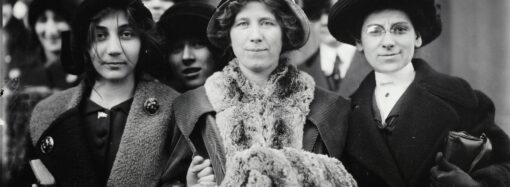It’s probably safe to say that many Americans don’t know that the Japanese actually invaded the Aleutian Islands of Alaska during World War II. And while that may be a surprise to learn, it’s how the battle ended that is really shocking.
For the Americans, the Aleutians were seen as a potential bridgehead for the Japanese to use in an invasion of North America. The Japanese saw the Aleutians in a similar way: A jumping off point for an American invasion of Japan. Such thinking reflected what Brigadier General Billy Mitchell told Congress in 1935: “I believe that in the future, whoever holds Alaska will hold the world. I think it is the most important strategic place in the world.”
While the idea of Japan invading America may seem farfetched to us today, we need to remember that at the time Japan had already conquered enormous swaths of Asia during the War, taking much of China and even penetrating briefly into India in addition to its control of South-East Asia and numerous Pacific islands. In June of 1942 the Japanese attempted to use an invasion of Alaska as a decoy to their attack on the island of Midway, which became the Battle of Midway. Thankfully, the U.S. didn’t take the bait.
During the Battle of Midway the U.S. decisively defeated the Japanese fleet, sinking four aircraft carriers, and kept control of the strategic Midway Island. But while the U.S. succeed there, the Japanese invaded two islands of the Aleutian Island chain in Alaska, Attu and Kiska.
It wasn’t until May of 1943 that the United States and Canada attacked the Japanese at Attu and it wasn’t until late-August of the same year that both islands were declared secure. It was on Attu, in the last major battle, that Americans experienced the first banzai charge of the war, giving them a horrifying introduction to a Japanese practice that would become commonly experienced as American forces defeated the Japanese throughout the Pacific and Asia.
War in the Outposts by TimeLife gives us a vivid and grisly account:
By nightfall on May 28 the bulk of the American forces were poised for the final assault on Chichagof Harbor. General Landrum decided to finish off the battle of Attu with an all-out attack the next morning.
Sometime during the night of May 28, Colonel Yamazaki reached a decision of his own. Out of 2,300 men on hand when the invasion came, he had about 1,000 still able to bear arms. He decided to counterattack. His plan was desperate. His men would break out of the Chichagof Harbor area, killing as they went, with the ultimate aim of getting through Clevesy Pass to the U.S. artillery position on a nearby hill. He would capture the massed howitzers, turn them on the Americans in Massacre Valley and hold them at bay until help came from Paramushir Island.
The men wounded too seriously to walk were given a choice: pistols with which to kill themselves or, for the few who could not do the deed, a lethal injection of morphine. The walking wounded were told to arm themselves and come along. By now weapons and ammunition were in short supply; some men had only bayonets lashed to sticks.
At 3 a.m. Yamazaki led his ragtag force up the valley. They fell upon Company B of the 32nd Regiment in the valley and part of Company L of the 17th on a rise. At first, the attack was silent; Americans were bayoneted in their sleeping bags. But then wild firing began and grenades exploded all around. The confused survivors of Company B fled in disorder, some running barefooted through the icy muck.
The Japanese overran a tented aid station, slaughtering the medics and the wounded in their cots. But then a sort of mass hysteria seized Yamazaki’s men. They began screaming and charging pointlessly hither and yon, breaking off in small groups. Some GIs who lived through the night of horror thought they were drunk. A few of the Japanese simply sat down among the Americans they had just killed and gorged themselves on American rations.
The main body of Japanese held together after a fashion and got into Clevesy Pass. There they fell upon the division engineers. Alerted by the gunfire below, the engineers had organized a defense line. Cooks and bulldozer drivers grabbed any handy weapon and fought hard. They stopped the Japanese in the pass.
Now the strange behavior of Yamazaki’s men turned even more irrational – to the Americans at least. The Japanese gave up trying to slaughter Americans and turned to killing themselves. Mostly they did it with grenades, holding them against forehead, breast, or belly. Hundreds finished themselves, screaming as they did so. In the dawn the valley was full of headless, handless, scooped-out corpses.
The mass suicide left the Americans numb with shock. ‘I am glad they’re dead, really glad of it,’ said the division chaplain as he walked among the corpses. ‘That worries me. How can I go back to my church when I’ve got it in me to be glad men are dead? But now I’m glad they’re dead.’
Similar banzai attacks would be experienced by Americans until the war ended. But never again would they happen on American soil.
















Leave a Comment
Your email address will not be published. Required fields are marked with *